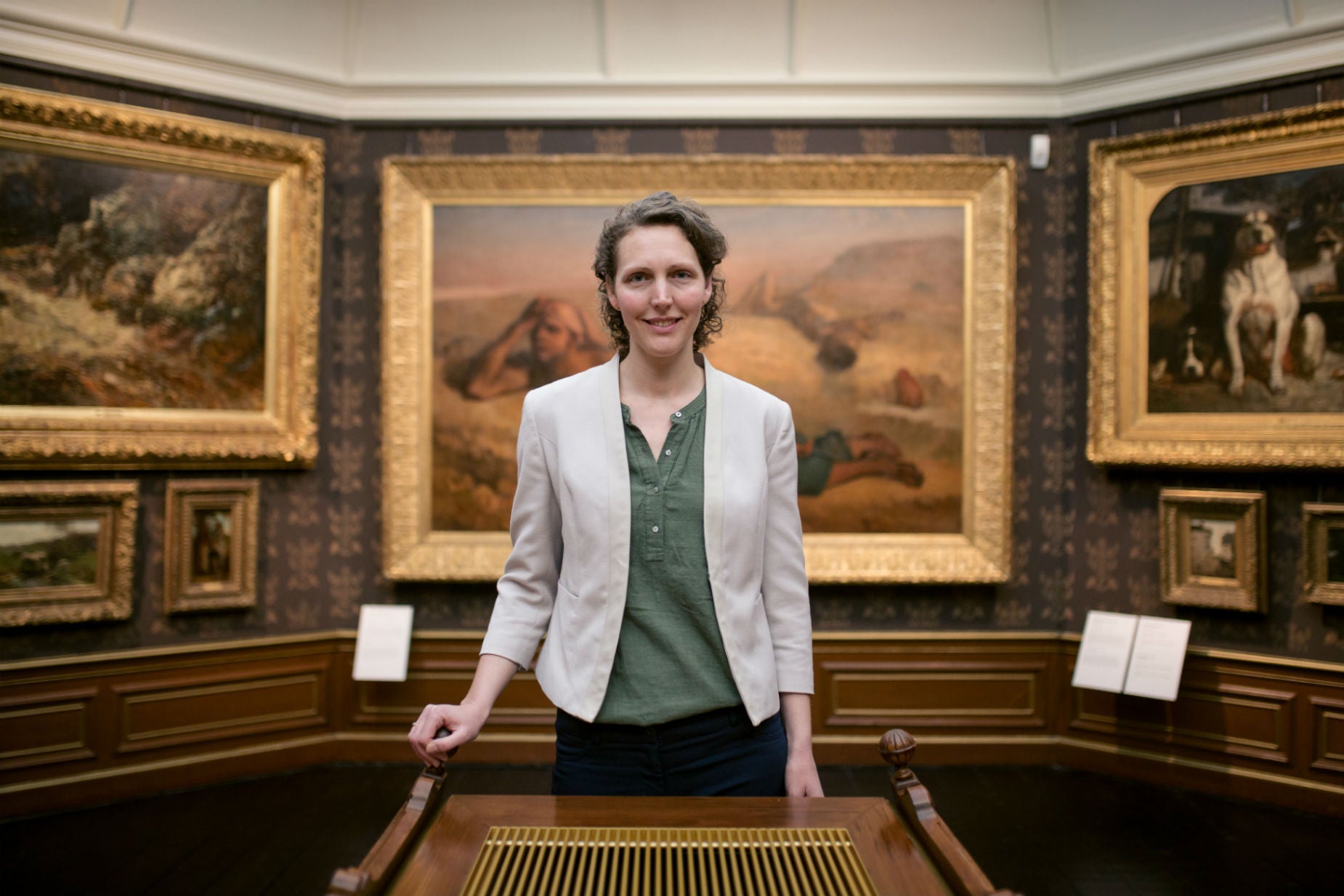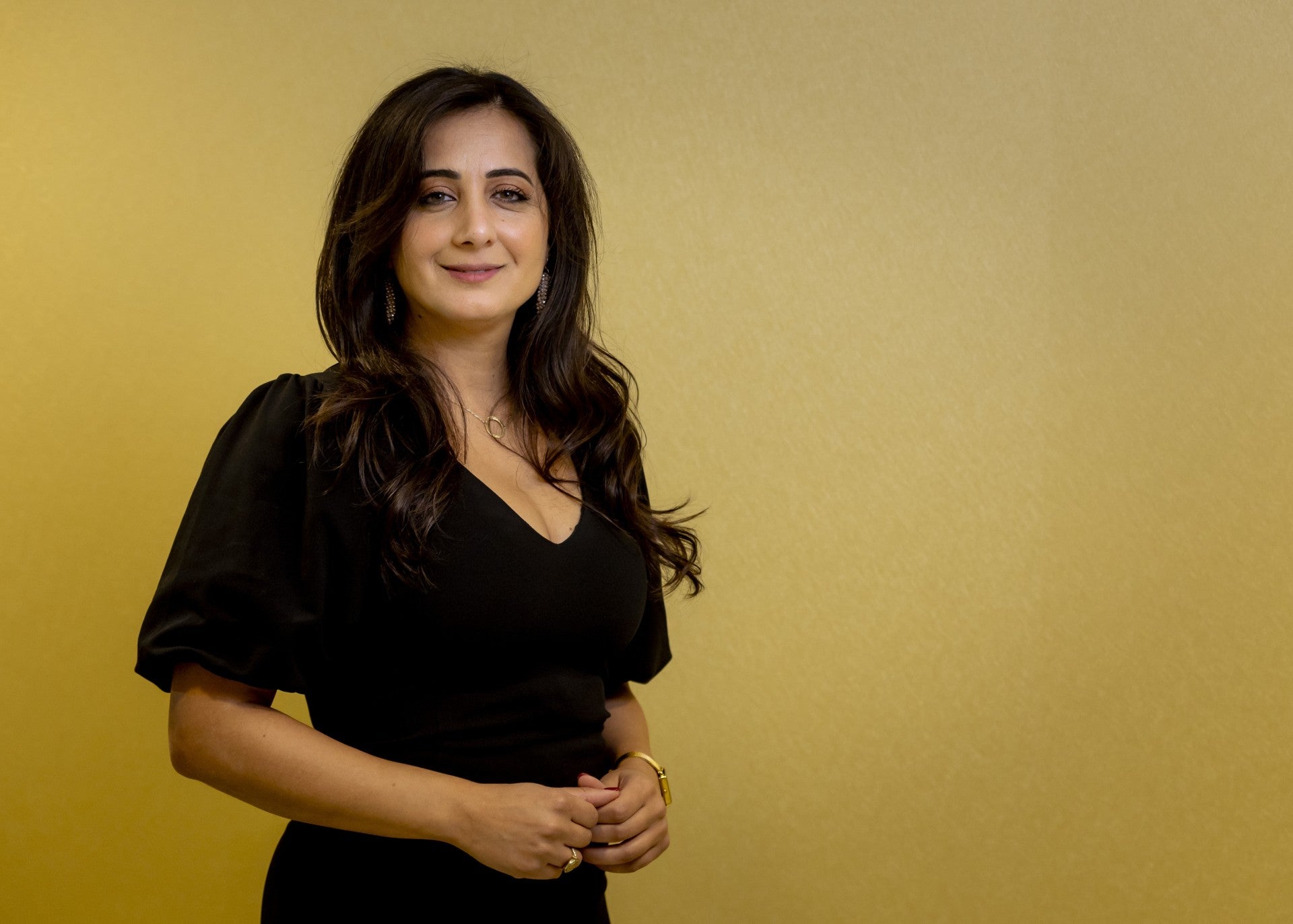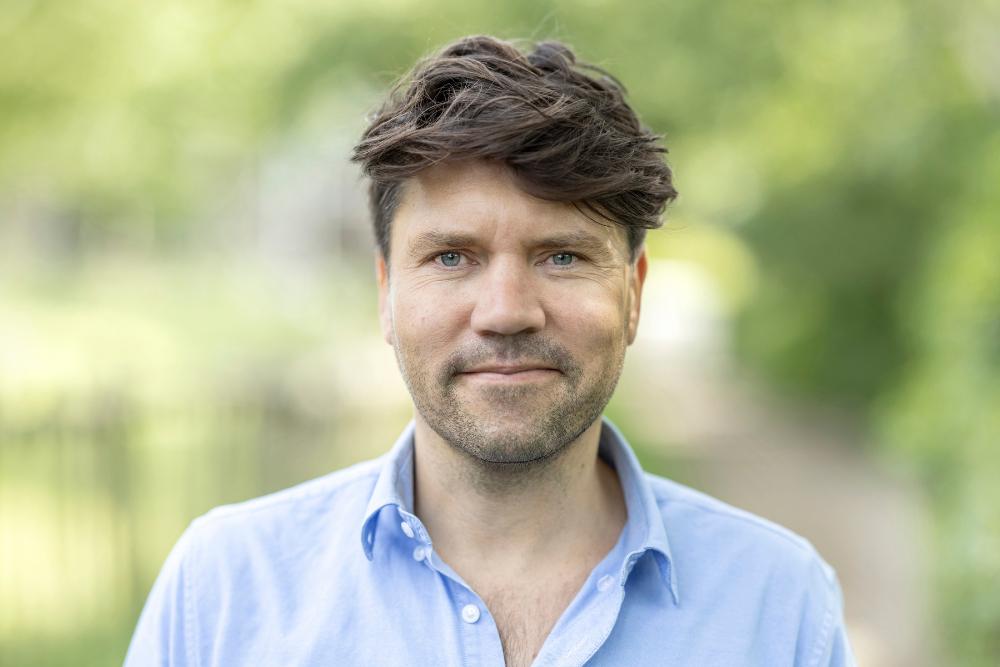Rense Suijver (34) graduated from the VU with a Master’s degree in Museum Conservation Studies, has worked for the Van Gogh Museum for a decade and recently became the curator of The Mesdag Collection in The Hague. Before the museum opens, she takes us on a special tour through quiet rooms, making the collection even more impressive.
Were you just as crazy about art when you were a little girl?
“My mother always tells me that when I was given the choice between going shopping with my sisters or visiting a museum with my parents, I’d always pick the latter. I always enjoyed going to museums. Still, I started studying Language & Cultural Studies in Utrecht before I switched to Art History. I was immediately captivated by art, aesthetics and the stories behind art. After my Bachelor’s degree, I decided to continue with a Master’s in Museum Conservation Studies. I did my internship at the 19th-century department of the Rijksmuseum, where I stayed for a while after.”
What do you find so intriguing about the 19th century?
“It’s an interesting period because it’s a tumultuous time, with world exhibitions and a lot of international contact. It seems as if artists became even more aware of their role and status, which is exactly what you see with Mesdag. He was an artist, but also a collector and a patron, and he tried to influence the art market.”
What typifies the art of this period?
“This was when photography first emerged. and you can see that a lot of artists start depicting the world differently as a result. All of a sudden, they no longer needed to paint photo-realistic images and became more concerned with conveying an atmosphere or a personal vision. You can also identify the earliest traces of modern art, as different visions emerge on how to deal with reality. Art develops a sense of subjectivity, from landscapes to portraits, clearly showing the artist’s vision. In my opinion, this added a whole new dimension to art. Art lets you look at your own world from a different perspective.”
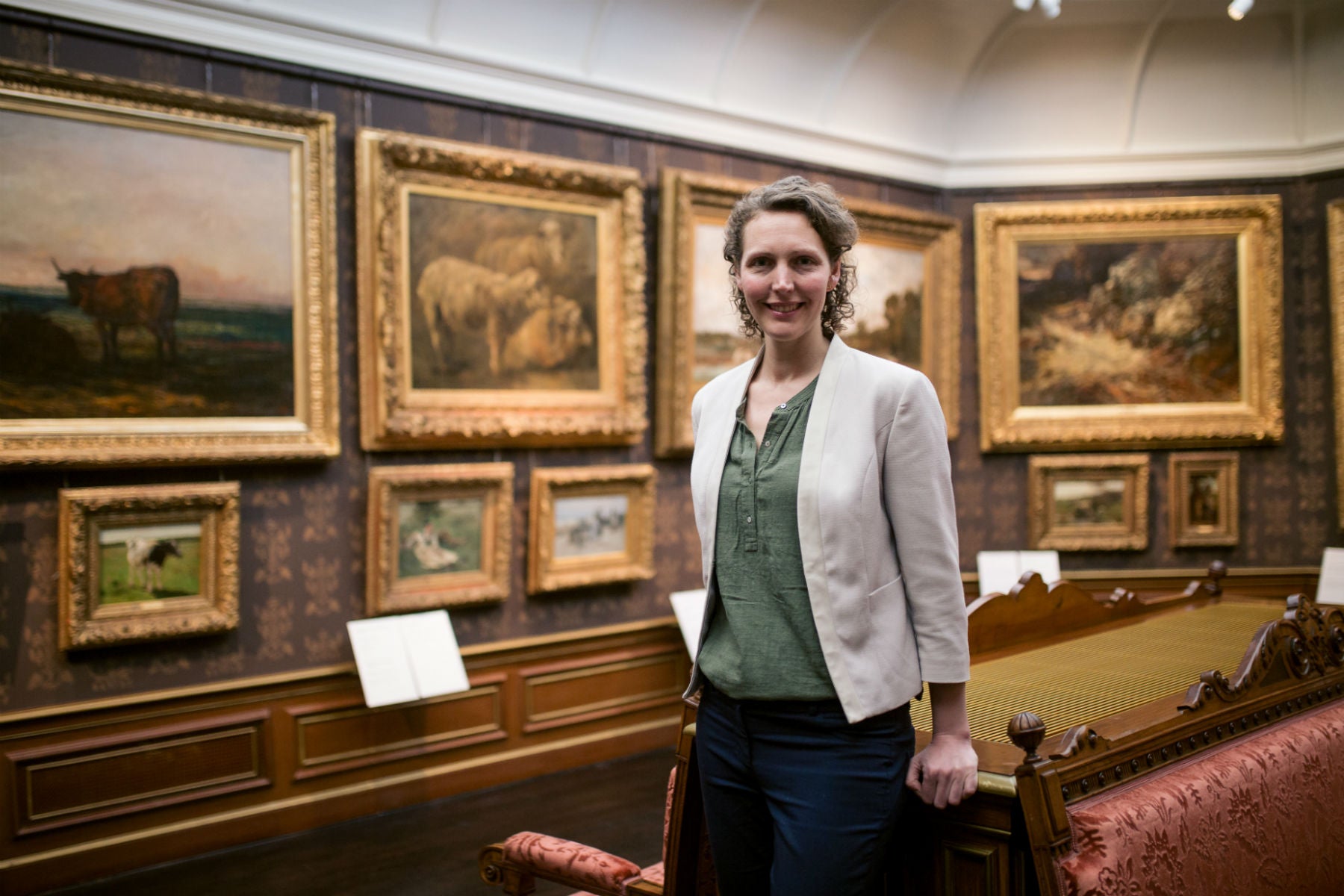
What does a curator do all day?
“I am responsible for a certain part of the collection. which involves managing the collection, making sure that it is in good condition, and assessing whether a work can be lent to other museums and whether new acquisitions would make a valuable addition. My days are varied and no two days are the same. I secretly enjoy showing people around myself. Sometimes, people come in that are a bit stressed, and if I manage to make them forget about the outside world during the tour, I’ll have had a good day.”
Do you feel privileged to be able to see works in the depot that aren’t shown to the public?
"Absolutely. It gives paintings and drawings a completely different aura. Being alone with a painting that was created over a century ago by someone who worked on it so closely can also be very intimate. That’s what I believe makes art special in the first place, and what sets originals apart from reproductions.”
When do you consider an exhibition a success?
“Of course I look at how the visitors and press respond to an exhibition, but for me, real success also includes conveying a story to visitors, or inspiring them by showing them something they knew little about before. Even if they are only struck by a single beautiful painting or vase. I think the story is important, but the experience of a work of art comes first."
Earlier, you called this museum a diamond in the rough. Why?
“Many people have never heard of it or tend to mix it up with Panorama Mesdag. I think Mesdag managed to put together a very special collection. He preferred sketchy work, i.e. work that was quick and easy to paint and landscapes that make you want to walk right into the painting. Apart from that, the museum is housed in a beautiful building with impressive rooms and a lovely garden. It's a very nice place to be."
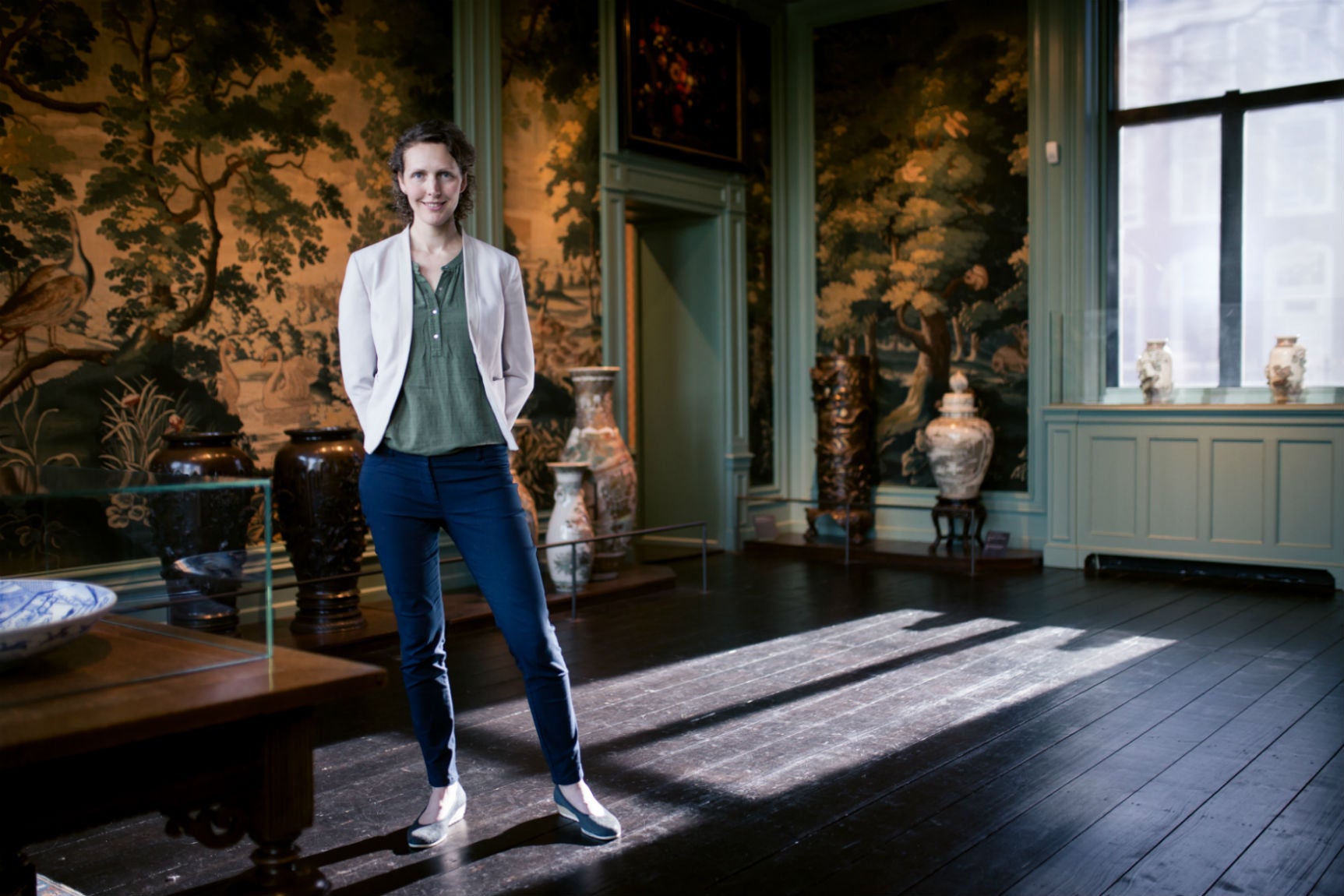
Which work is not to be missed?
"In addition to visual arts, the Mesdags also bought handicrafts, including ceramics. Pauw (peacock), a set of vases by Theo Colenbrander, is a very special work that can currently be seen in the Mesdag & Colenbrander exhibition and is also one of the masterpieces of the permanent collection. The deep colours and stylised peacock eyes are beautiful, and I can’t look at the vases without seeing a scary face.”
So, you’ll soon start seeing queues similar to the Van Gogh?
“Ha ha, probably not. We’ve managed to solve this issue in Amsterdam by selling tickets online, by the way. Although we’d like to have some of their visitors here, we definitely wouldn’t want all of them. The rooms are a lot more intimate here, but I’d certainly love to share all the beautiful things in the museum with more people.”
You have to choose: Van Gogh or Mesdag?
“That’s a difficult one. If you’re asking whose work I’d like in my living room, I’d go for Van Gogh, but both artists were very interesting. They were polar opposites, actually: Mesdag was very successful during his lifetime, but Van Gogh had to wait. They had very different styles and very different characters, and both are unique in the art world. Is that diplomatic enough?"

